POWER BLAZER
( Power Blade )
|
|
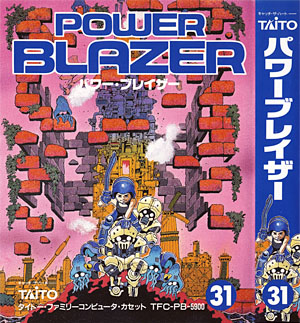
|

|
|
パワーブレイザー
©Taito Corp. 1990
Release: 1990-04-20 (¥5900)
Cartdridge TFC-PB-5900
Platform/Action game
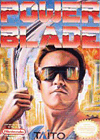

|
Released in America as
POWER BLADE
( NES-7T-USA )
|
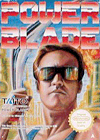

|
Released in Europe as
POWER BLADE
( NES-7T-XXX )
|
|
Power Blazer is an action/platform game by Taito. In the 21st century,
the whole world is handled by a super-computer called the Brain Master. But one day,
all systems start to inexplicably shut down at once. Humans have to accept the evidence,
Brain Master has taken over the once gladdened Earth and plunged it into chaos. The player
takes control of Steve Treiber, a highly trained soldier on a lone mission behind enemy
lines. He is the only one capable of taking Brain Master offline and to save the world. Our
young hero is armed with a powerful combat-boomerang called the 'Power Blazer'. The weapon
can be thrown forward and take out all kind of enemies. It can also be charged-up for farther
reaching and more powerful attacks - a special power meter located at the top of the screen displays
the current weapon charge. This meter is upgraded throughout the game by collecting power capsules
defeated enemies leave behind. Steve can also collect bombs and use them to wipe
out all remaining foes on screen or pick-up and store energy tanks to refill some lost health.
At the beginning of the game, the player can freely choose one of the six available stages in any
order. Stages are fairly large and most of them have different routes to the finish line (this only
applies to the Japanese version of the game though, see the info section). A password is given to
the player at the end of each zone to save his progress.
|
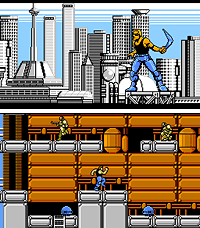 The American (and European) version of the game, called Power Blade (picture on the right),
is significantly different
than the Japanese version tested here.
The protagonist of Power Blazer was replaced with a beefier Arnold Schwarzenegger
look-alike character called "Nova". The gameplay is roughly the same but it was greatly improved - controls
are better and the boomerang can be thrown in any direction which hugely improves the overall
gameplay. Power Blade features a longer introduction sequence,
new enemies, different bosses and a totally different mission map.
Stages are also far less linear and Nova has to find an informant
first. They are usually hidden somewhere in the visited zone and they
unlock the door to the area's boss.
Interestingly a sequel to the American version of the game was released in Japan in 1991
and was called Captain Saver. But when it was released in American, the
game was renamed Power Blade 2.
The American (and European) version of the game, called Power Blade (picture on the right),
is significantly different
than the Japanese version tested here.
The protagonist of Power Blazer was replaced with a beefier Arnold Schwarzenegger
look-alike character called "Nova". The gameplay is roughly the same but it was greatly improved - controls
are better and the boomerang can be thrown in any direction which hugely improves the overall
gameplay. Power Blade features a longer introduction sequence,
new enemies, different bosses and a totally different mission map.
Stages are also far less linear and Nova has to find an informant
first. They are usually hidden somewhere in the visited zone and they
unlock the door to the area's boss.
Interestingly a sequel to the American version of the game was released in Japan in 1991
and was called Captain Saver. But when it was released in American, the
game was renamed Power Blade 2.
|
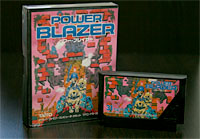 Like other games released by Taito for the Famicom System, Power Blader comes
in a hard and more durable plastic case (picture on the left).
Like other games released by Taito for the Famicom System, Power Blader comes
in a hard and more durable plastic case (picture on the left).
|
Teaser text from the American version:
22nd Century Warrior!
When New Earth's Master
Computer is attacked by
aliens, only NOVA, lord of the
ancient Power Blade, can
hope to battle through to
Control Center and restore
the Data Base.
|
Game Staff (Copied from the end credits) :
|
Programmer
Iwasagon
|
|
Designer
Kamegon
kato
|
|
Sound
Yamako
Banbi
|
|
Produce
Kikuchi
Njk
|
|
Thanks
Hattori
Hatano
|
|
Presented by
Taito
|
|
O
M
A
K
E
|
|
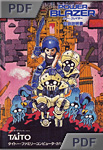
|
|
|
Click on picture to enlarge |
|
|
|
LK

|
|
Add your Pov here !
|
P
O
V
s
|
|
Power Blazer has an interesting story and is a fine (and rare) example
of a game that was vastly improved when redesigned for the American market.
Power Blazer is a fun, yet flawed, Megaman wannabee. Graphics,
enemy designs and the soundtrack are excellent but controls are a bit stiff and
limited. Jumps are really short and the boomerang can only be thrown in front of
the character at a ridiculously short range. Power-ups don't really help as the
power meter needs to recharge before you can throw the weapon again at full power.
Finally, the game gives you the choice of six stages to start from but completing
them doesn't appear to unlock any special item... the American version did address
the fundamental control issues and is a lot more fun to play, but I personally miss
the cartoony design from the original. All in all the original Japanese game is fun
despite some annoying flaws but the American version is a much better game which most
certainly deserves four stars or more.
|
|
|
|